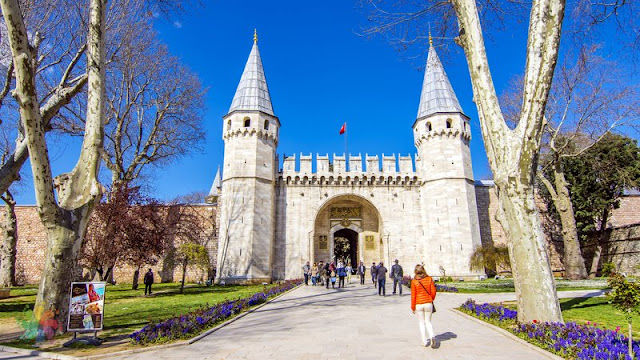
Ottoman newspapers on the walls of Dolmabahçe palace
Paper parts from 1917 were found inside the divider mortar during a rebuilding work at the Dolmabahçe Palace's Süfera Salonu (the Ambassador's Hall) in Istanbul on Jan. 23.
Paper parts from 1917 were found inside the divider mortar during a rebuilding work at the Dolmabahçe Palace's Süfera Salonu (the Ambassador's Hall) in Istanbul on Jan. 23.
The papers were utilized as filling materials during the reign of Ottoman Sultan Mehmed Reşad in 1909-1918.
The neat pieces of the paper pages recount anecdotes about the Ottoman Empire's initial two planes, and that the last made a trip from Beirut to Damascus securely.
While the printing date of the Ottoman paper is evaluated to match with the mid 1910s, a French day by day part peruses the date 1917.
During the reclamation works in one of the corridors of the royal residence, a sketch of a male representation was likewise found behind the layers of paint on the divider.
The representation, which seems to have been drawn with oil paints, is believed to be a keepsake left by the castle etchers.
"The craftsmans who made the adornment work of that period utilized the dividers like a composition palette," said Cem Eriş, the leader of the reclamation branch of the National Palaces.
Dividers like a canvas palette
As indicated by the subtleties identified with the reclamation at the hour of Sultan Mehmed Reşad, it is comprehended that the male representation, which was found under the layers of paint on the divider in the rooms 30 and 32, was drawn with oil paint, and the sketch-formed picture is thought to have been made by the castle calligraphers.
Moreover, it was uncovered that the paper pieces were utilized as filling materials. It is written in the paper pieces, containing Ottoman and French news, that the "Footstool" and "Ruler Celaleddin" planes, the primary planes of the Ottoman Empire, effectively completed 40-minute flights.
"Our reclamation works have been proceeding at the Dolmabahçe Palace Süfera Hall for over a year. Before we began the rebuilding work in the room where the diplomats were gotten, we made examinations. Similar works are going on along these lines in room 32. During the reclamation and protection process, we experienced intriguing things. An image of a male figure showed up under the paint layers. The craftsmans, who made the embellishment works, of that period utilized the divider like an artistic creation palette. There are other various drawings, tree pictures and scrawls. One of the calligraphers made a trial by drawing a human figure. He left us such a shock under the paint layer, when we arrived, our companions halted the work," he said.
Eriş said that they took the human figures under security.
"The National Palaces Administrative Directorate has a Science Evaluation Board. They will settle on a choice when we present the figure we found to the board. We will choose how it will be secured and how our functions will keep, as indicated by the choice of the board. Here we see the Ottoman male picture with a facial hair, mustache and turban, which obviously makes an alternate intrigue," he included.
Expressing that the filling material comprised of the cases of electrical materials utilized around then, Eriş stated, "In the paper sections, we saw news about Siyer-I Nebi and the accomplishment of the initial 40-minute excursion of Ottoman and Prince Celalettin planes from Beirut to Damascus. This is an occasion that occurred during the 1910s or soon after. In French writings, there is the ad of a performance center play, which is from 1917. These are the papers left from the work completed somewhere in the range of 1910 and 1917. We will probably open the spot to guests this year."













